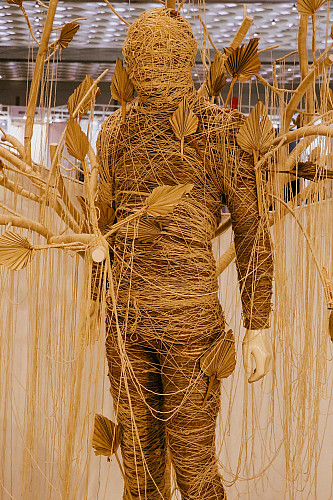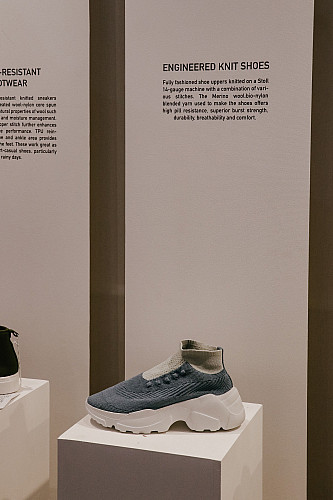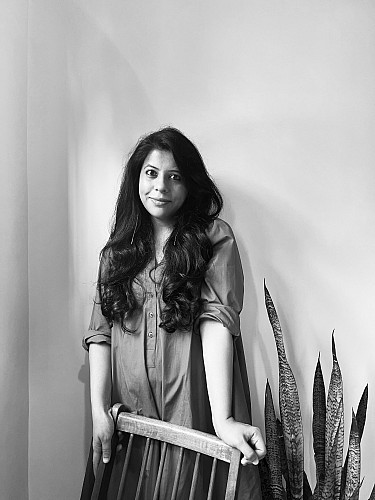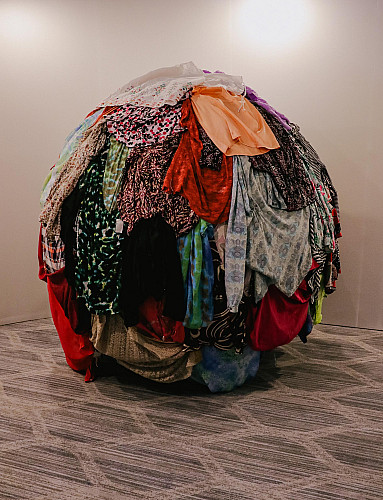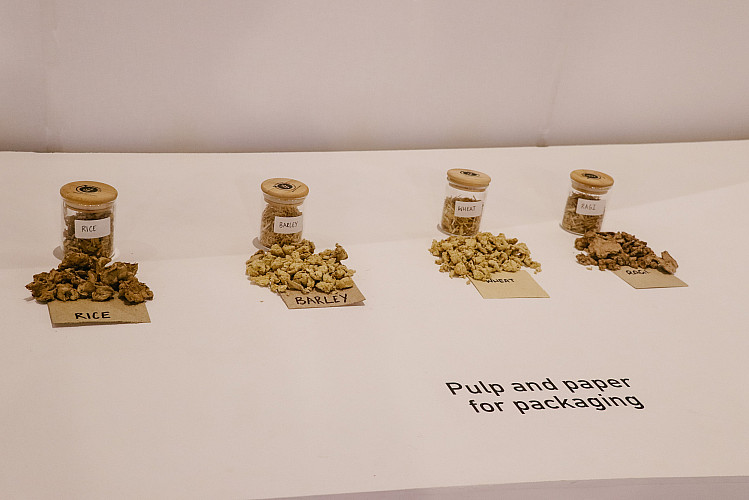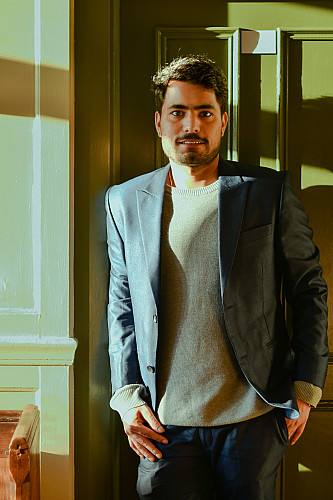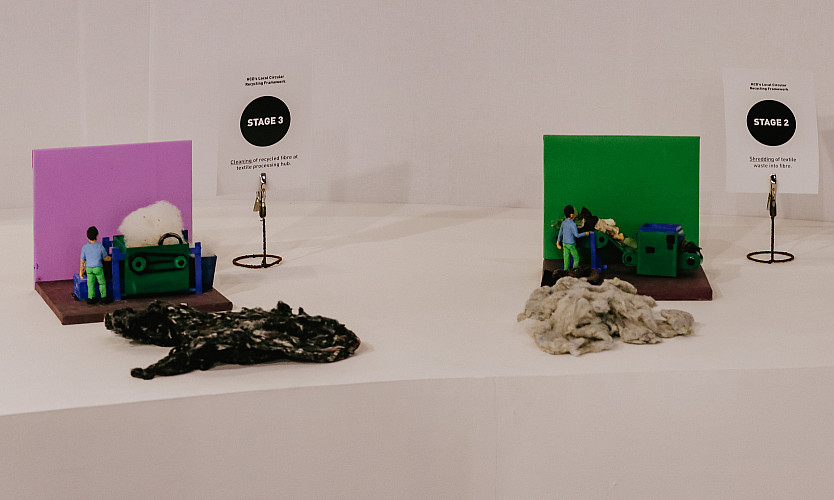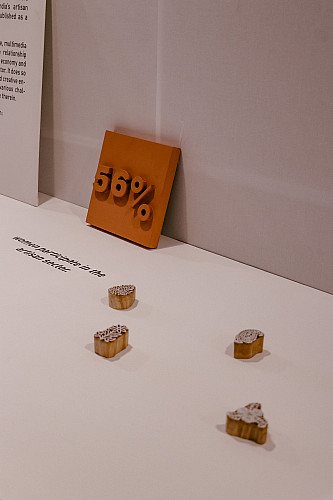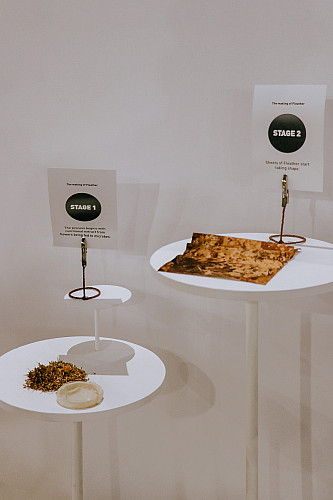Interviews by Akanksha Pandey. Pictures by Asad Sheikh.
John Roberts, The Woolmark Firm
Inform us about The Woolmark Firm’s latest developments with sustainable wool.
At The Woolmark Firm, we’re always engaged on improvements that convey constructive change within the trend trade. The pure colouration expertise is among the course of improvements, the place we labored with our associate BioDye from Samantwadi. The uncooked supplies, like plant leaves, flowers, stems, and so forth., are all grown regionally by BioDye. Specializing in sustainable dyeing processes with minimal influence, BioDye seeds scientific breakthroughs utilizing one of the best of nature to create 100-per-cent pure dyes and biodegradable substances via eco-friendly processes. This innovation helps in making trend extra sustainable as designers can use 100-per-cent pure fibres like wool and course of it in vibrant pure colors to get desired outcomes.
The opposite innovation is within the footwear class, the place The Woolmark Firm has used developments in knitting expertise to facilitate using wool in footwear. Combining wool with completely different yarns in a shoe higher attracts on wool’s pure properties to advertise dryness, breathability, freshness (anti-odour), consolation and heat. With totally original knitwear uppers, waste is lowered by instantly mounting the formed piece onto the only real of the shoe. Filament-wrapped wool yarns add energy and resistance to abrasion, extending the wear and tear of the shoe.
Are you collaborating with any Indian designers?
We always collaborate with designers to teach and encourage as they’re an integral a part of our provide chain in our farm-to-fashion journey. The Wool Lab, which is a wool pattern forecasting and sourcing instrument from The Woolmark Firm, is a valued useful resource for designers. Previously we have now collaborated with Péro, Rajesh Pratap Singh, Eka, Dhruv Kapoor, to call just a few. Pre-COVID-19, Péro and The Woolmark Firm did a present at Lakmé Trend Week with a handwoven merino wool assortment with Bhuttico [a wool weavers’ cooperative society].
What does sustainable design imply to you?
Sustainable design means following these three steps. First, designing for the lengthy lifetime of the garment with fibres, yarns, materials and constructs which are sturdy in clothes that don’t exit of trend (select sluggish trend). Secondly, educating customers on best-practice care, restore and reuse of clothes. Lastly, designing for the afterlife of the garment by selecting pure fibres which are biodegradable and designing for disassembly in order that parts of a garment could be reused and recycled. The Woolmark Firm has developed a toolkit for designers to assist them implement round design of their workflow.
Kirti Poonia, Relove
What’s the course of via which you might be enabling sustainability within the trade?
Our strategy is to construct round tech that may assist manufacturers change into extra sustainable. We’re doing this in 3 ways. Relove, a brand-owned resale programme, which helps manufacturers to extend the lifespan of their merchandise and purchase new prospects. Rescue, a digital manufacturing unit outlet, which helps manufacturers liquidate barely faulty gadgets. And take-back fashions, the place manufacturers take again their gadgets in trade for retailer credit score. The manufacturers then upcycle these things to make sure they don’t make their solution to the landfill.
How did you arrive at this concept?
Sustainability can change into straightforward to imbibe into companies via expertise. Manufacturers immediately need to do the appropriate factor, however are sometimes very overwhelmed whereas attempting to realize their sustainability targets. So, we have been searching for a tech-first resolution that may very well be easily executed. Since I’ve labored in sustainable trend, I understood the issues of consumers — with the ability to put on solely 20 per cent of their wardrobes 80 per cent of their time. Co-founder Prateek Gupte labored in expertise that was making the lives of manufacturers and customers simpler. Collectively, we constructed this resolution to make trend extra round.
What does sustainable design imply to you?
It’s the long run — a future for companies and the planet is simply doable if we be taught to co-exist. Sustainable design is the one manner for all of us to outlive.
Himansha Singh, Craste
What’s the course of via which you might be enabling sustainability within the trade?
Our imaginative and prescient is to offer a substitute for timber (to save lots of forests), to supply an answer to crop burning, and to place waste to work. At Craste, we innovate to utilise waste to provide value-added merchandise. We’ve got pioneered the novel method, FuMa Solv, which converts any kind of crop waste into food-grade pulp (patent pending) and could be reworked into paper for packaging and different functions. We’ve got additionally prolonged our R&D to make use of textile waste, sanitary pads waste and another plant-based waste. Our pulping expertise is predicated on round economic system ideas and adheres strictly to inexperienced manufacturing, additional reducing carbon footprint on the manufacturing degree.
We’ve got additionally innovated with creating India’s first tree-free E0 engineered boards for furnishings and building functions. Often, MDF and particle boards comprise excessive quantities of formaldehyde, a recognized carcinogen. Our boards are E0, which makes them formaldehyde-free (CARB-certified) and due to this fact, a a lot more healthy various. We additionally provide round packaging to the trade, the place their waste can wrap their merchandise.
How did you arrive at this concept?
My brother Shubham Singh (co-founder and CEO) was a scholar at Imperial Faculty London, the place he was engaged on carbon-capturing expertise as a sophisticated chemical engineering scholar. On the time, information of crop burning in India and the air pollution it prompted within the capital was throughout BBC and The Guardian. Shubham, who was already engaged on initiatives associated to decreasing the burden of greenhouse gasses on the atmosphere, determined to work on crop stubble to deal with discovering an answer for crop burning in our nation. I used to be a PhD scholar and a analysis fellow on the College of Cambridge and I used to be engaged on drug improvement and microbiology. I joined Shubham when he arrange his laboratory in Enterprise Heart, Pune and from there Craste was born to convey scientific innovation into the traditional sectors of paper and board-making.
What does sustainability imply to you?
Sustainability ought to be a part of everybody’s life and change into the norm. It ought to be as a lot of a precedence as consuming clear water, and other people ought to autonomously go for it with out compromising or considering of it as an possibility.
Vishal Tolambia, Humanity Centred Designs
What’s the course of via which you might be enabling sustainability within the trade?
India is the second-largest attire and textile manufacturing vacation spot worldwide. Ninety per cent of the manufacturing takes place at micro and small-scale factories, which at the moment function in an unorganised and decentralised manner. One problem they face is accumulating pre-consumer textile waste on the manufacturing stage; over 1,600 thousand tonnes of textile waste is generated even earlier than a garment reaches a client, and instantly results in landfills. Humanity Centred Designs has designed and developed an progressive native round recycling expertise that utilises the pre-consumer textile waste from these marginalised MSEs (Micro and Small Enterprises) and converts it right into a recycled vary of 100-per-cent low-impact luxurious textile supplies, which we name HCD-Tex. A extremely sturdy, versatile, and powerful vary of recycled supplies that may be utilised by any trend model for sustainable product improvement. Developed at London Faculty of Trend throughout my grasp’s research, Humanity Centred Designs is working alongside London Faculty of Trend researchers to remodel their low-impact supplies into internet zero-impact supplies sooner or later.
What does sustainability imply to you?
For us, sustainability means enabling sustainable operations. To fulfil this dedication, we offer coaching, help, steering, and workshops to the associate MSEs for development in the direction of a round economic system. Sustainability additionally signifies that we look after the planet and defend it, by ensuring that 80 per cent of our manufacturing is thru renewable vitality sources, accountable consumption of water, and minimised useful resource utilisation. We’re on a journey to make all trend MSEs in India round.
Priya Krishnamoorthy, 200 Million Artisans
What’s the medium via which you might be enabling sustainability within the trade?
200 Million Artisans (200M) is an impact-first ecosystem enabler reimagining the potential of handmade in India. As a social enterprise devoted to accelerating progress for craft-led Micro, Small and Medium Enterprises (manufacturers, influence enterprises and producers), we bridge gaps in info, innovation and funding in India’s artisan economic system with a transparent deal with addressing the livelihoods, gender inequality and local weather change nexus. By leveraging new media and inventive storytelling, we additionally work in the direction of making info accessible to the bigger public, and getting them and invested within the long-term sustainability of the artisan sector and the communities that make up this wealthy, vibrant, artistic universe of handmade.
How did you arrive at this concept?
200 Million Artisans began out as a COVID-19 platform to assist join the Indian diaspora who have been eager to help artisan communities and enterprises in India however didn’t know the way. 200M served as a platform to cut back a few of the many info gaps within the sector. We did this by itemizing sources, creating visibility for fundraisers, and by championing enterprises using and supporting artisan communities. India’s artisan sector is the second-largest employer after agriculture however merely doesn’t appeal to the identical degree of funding or innovation. Our deal with analysis is to bridge the knowledge asymmetry and leverage knowledge to speak its sheer measurement and potential. We consider that the artisan has the potential to usher in a extra equitable, sustainable and inexperienced economic system. It’s time traders, corporates, and policymakers view this in a brand new gentle and direct much-needed capital and sources to plug in gaps and construct infrastructure.
What does sustainability imply to you?
Greater than 56 per cent of artisans in India are ladies, and it is because the artisan sector is designed to supply significant employment alternatives on the doorsteps of ladies in rural India. For us, sustainability means empowering our many artistic and social enterprises working with handmade in India to handle the ever-present challenges of livelihoods, local weather change and gender equality by serving to them develop and scale sustainably. To not point out, handmade inherently champions small-batch manufacturing, eco-friendly or sustainably sourced uncooked supplies, considerate processes and conventional abilities which have been handed down the generations.
Ankit Agarwal, Phool
What’s the course of via which you might be enabling sustainability within the trade?
Fleather is a biomaterial. It’s a sustainable, animal-free and non-plastic various to standard animal leather-based. The method of producing Fleather is predicated on the ideas of biomimicry — a naturally occurring organic course of replicated within the lab. We utilise waste flowers, a supply of air pollution, as our uncooked materials. These flowers function a supply of diet to a specific microbial species, which develop over them. As an finish results of this progress course of, sheets are shaped, that are additional handled with sure plant extracts and vegetable dyes. The manufacturing of Fleather is carbon destructive and doesn’t incorporate any dangerous or hazardous part whereas its typical competitor, the animal leather-based, undergoes tanning as part of its manufacturing course of and this tanning entails utilization of a whole lot of poisonous chemical substances, heavy metals, and so forth. that wash away with the tannery effluents and blend in river water. Fleather is a step ahead within the course to cease such environmentally degrading practices and set up sustainability.
How did you arrive at this concept?
It was serendipity. Initially, we recognized temple flower waste as a supply of air pollution and began making incense sticks and cones out of it. At first, manufacturing capability was small and a whole lot of collected flowers remained unutilised. At some point, we noticed a thick, white, fluffy lump over an unused flower pile. We have been intrigued. A deeper dive into it allowed us to know the microbial progress phenomenon. We additionally seen that the velvety contact of this fluffy layer was acquainted. The feel resembled that of leather-based. We have been curious to duplicate the identical within the lab and experiments in that course led us to the invention of Fleather.
What does sustainability imply to you?
A round economic system mannequin with triple bottom-line advantages alongside social, financial and environmental strains is sustainability for us.
